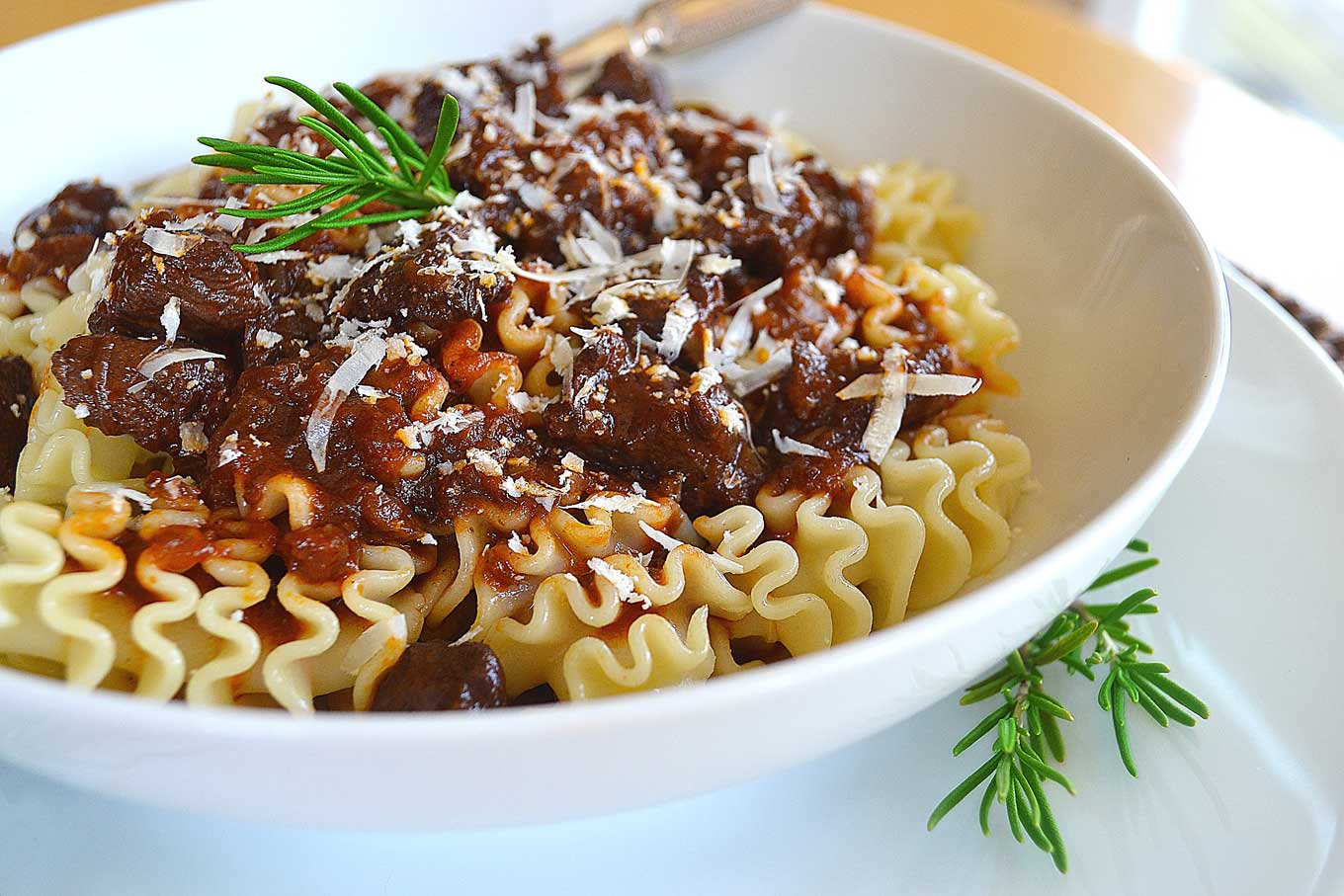
I know this may sound silly, but it never occurred to me to make a ragù with diced pieces of lamb in place of ground meat. And yet, here we are with this post of lamb ragù pasta. I got the idea from this excellent, though rather vague, book about cooking that I’m reading by the title of Cuochi Si Diventa or One Becomes a Cook. It’s by the unlikeliest of names for a man donning the mantle of Italian cooking authority…Allan Bay.
But of course.
I say this because most of the wonderful Italian cookbooks I own, and there are a few!, are penned by names that do not end with vowels. THAT is why the author couldn’t possibly have a name like Marco Bilanci or Beppe Marchi or even Luca Battaglia – all names I’ve just made up and all of which, I think, would make for interesting characters in an Italian melodrama. I don’t know why I even continue to be surprised by this phenomena…Italian cuisine really is that good! Everyone wants in…
As it turns out, il signore Bay was born in Milan, Italy, a mere hour and 15 minutes from my hometown of Ivrea. He studied at the same university in Milan (la Bocconi) as my brother-in-law, who’s highly legitimizing Italian name is Marco Santini.
In other words, he’s the real deal – despite having both names ending in consonants.
I suspect this is what happened – there once was a buoyant Englishman who had the good taste to marry a beautiful Italian woman from Milan. He also had a demanding palate, which required him to hunker down in a food mecca. Thus, they shacked up in a nice luxury condominium near Piazza del Duomo and lived happily ever after, with il signor Allan Bay ‘visiting’ soon thereafter. But it’s all sheer speculation. Clearly.
Non-Italian name aside, he nevertheless is to Italians what Mark Bittman is to Americans – a source of culinary wisdom and inspiration spread through newspaper columns and cookbooks. I enjoy reading him immensely, and have learned a thing or twenty-three in the process.
While his book is short on precise instructions, it’s full of moxie and opinions (most with which I agree). I believe one might say ‘he is full of piss & wind, that one,’ if one was prone to saying such things.
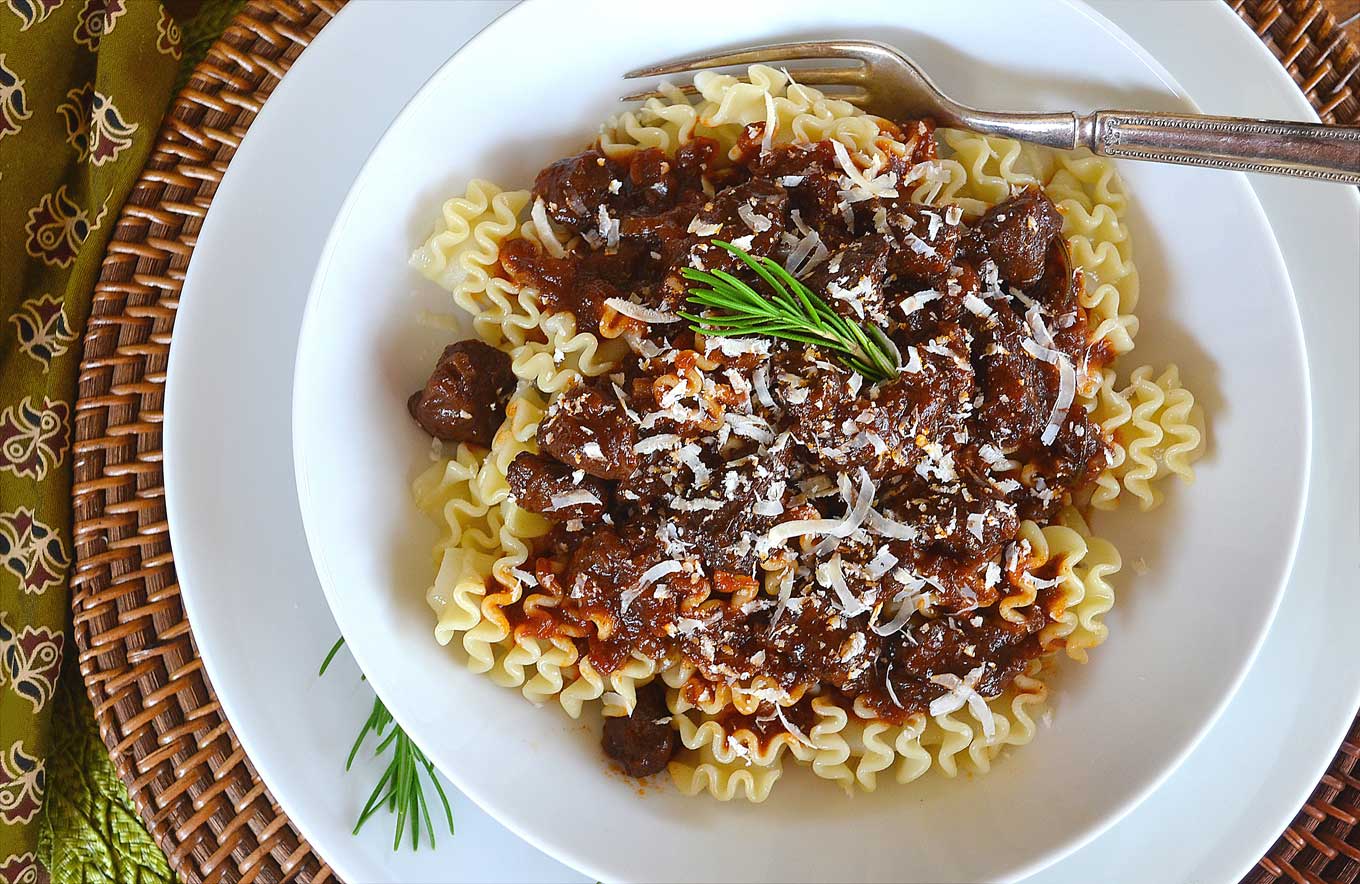
Clearly he is goading us on. His goal is to get us to delve into his world of cooking opinions and techniques and to find out for ourselves, through trial and error, whether we agree with him. Ok. I’ll play. He’s come out with a sequel to One Becomes a Cook and I would consider it a most wonderful birthday present, mamma, if you just happen to be reading this…oops, did I just write that?
Thanks to the inspiration of il signor Bay, I now have another rich, savory and deliciously satisfying sauce to add to my pasta repertoire.
Now, when you make this recipe, you’ll discover as I have that it is a bit more time consuming to snip away at a cut of meat with kitchen scissors than it is to chuck a pound of ground lamb into a skillet. Why kitchen scissors? Because I find it easier to manipulate the meat and accomplish what I’m trying to do. There’s too many nooks and crannies to deal with when chopping up a shoulder blade. I find scissors work beautifully. There are chefs and culinary experts that are probably raising their eyes to the sky as I say this…but it is just my opinion.
More expedient ground fare will not allow you, however, to bite into succulent little pieces of lamb. When you do, it is tantamount to winning a small stuffed teddy bear at an amusement park. Sure, it’s not life-altering glory or anything like that, but it does make you smile for a minute or so. Until you take the next bite and smile again.
That’s what lamb does to me, anyway. Its flavor just makes me happy. I can’t imagine anyone not liking it, though I know they’re out there. You can find them on the internet, certainly. I was recently on a food web site and someone had this to say about lamb: ‘It’s fatty, greasy, rank, and only acceptable in a late night kebab when off your face.’ Why…that person is even more opinionated than il signor Bay!
It is hard to describe, though, the flavor of lamb. I’ve thought about it and I’d like to say it tastes like a muskier, inherently spicier, slightly more textured version of chicken, but I still fall short of the mark. Can any of you describe the taste of lamb to me? Help!!! In any case, I find it so satisfying a chew.
In this post, I serve the ragù with festosi-shaped pasta because I loved all those grooves on each piece of pasta and thought they’d hold onto the savory sauce brilliantly. And they did.
making lamb ragù pasta
Wash 1 ½ -2 lbs. of lamb shoulder blade under cold water and then paper towel-dry well.
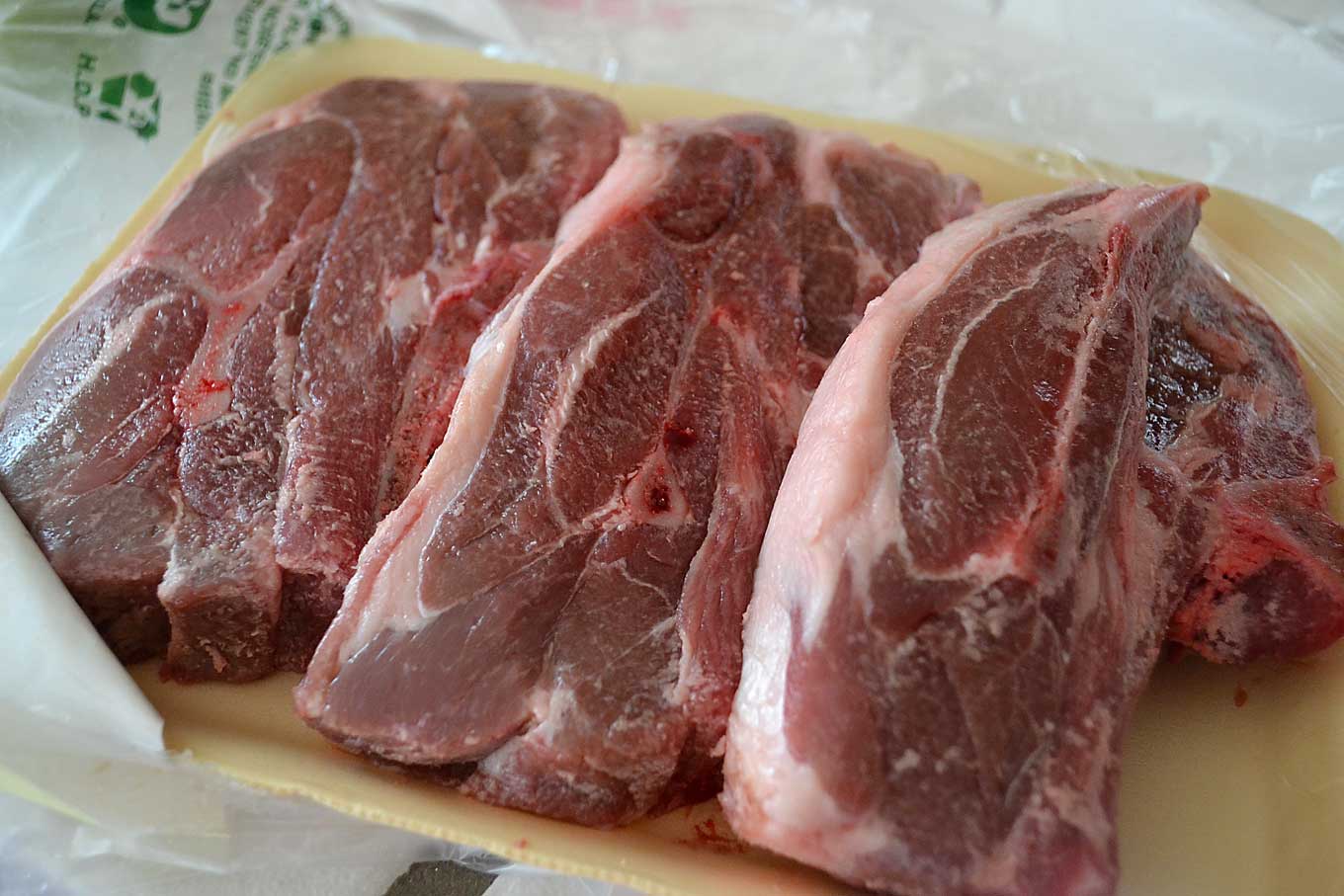
With sharp kitchen scissors, start to trim the pieces of excess fat away. Now cut the meat away from the bones to separate the two. Finally, cut the pieces of meat into small cubes, trimming any fat you deem removable.
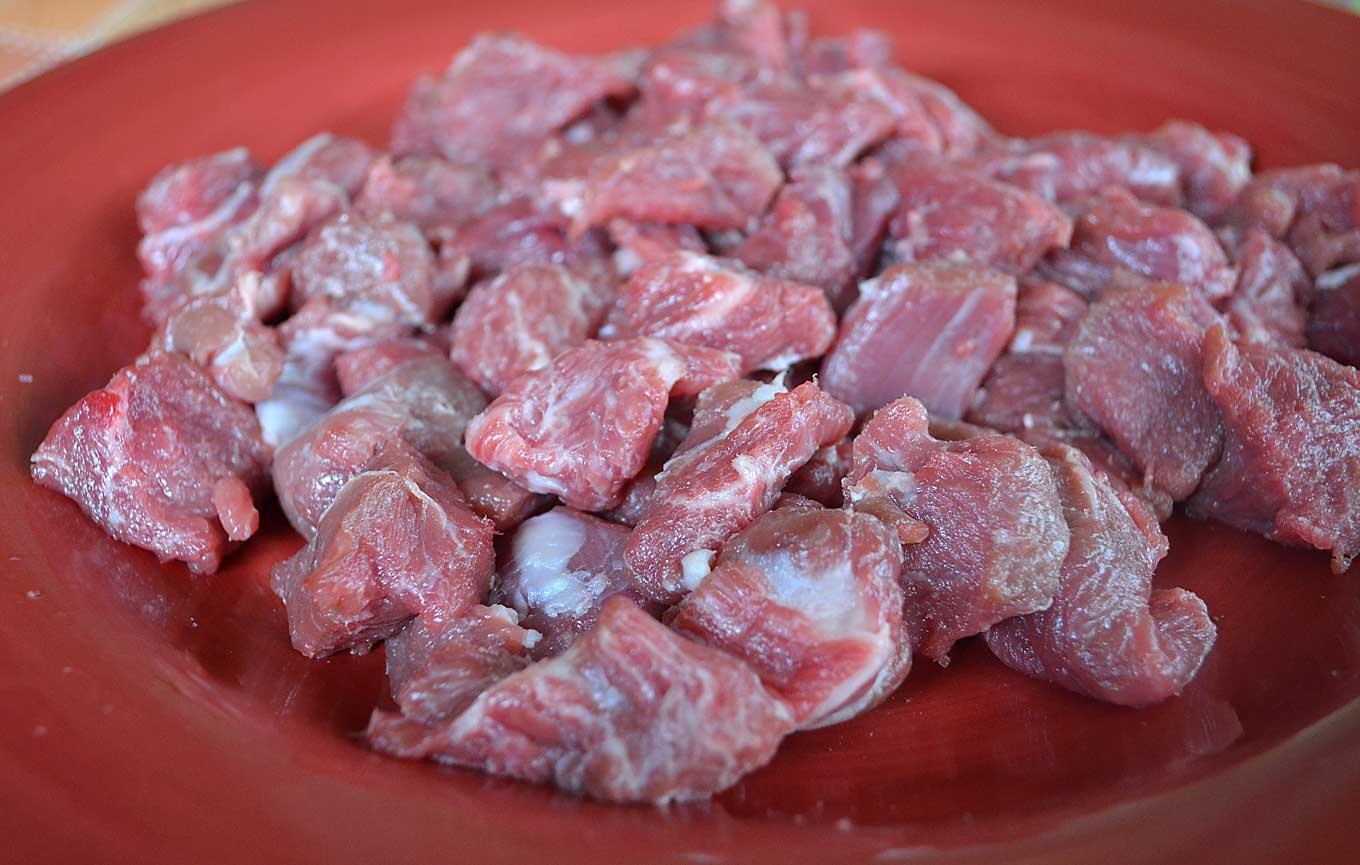
I like my meat on the lean side, so I tend to do a lot of trimming.
Also, place 1 cup of red wine into a small pot and bring to a boil. Allow it to boil gently for 5 minutes and take it off the heat. This is another wonderful thing I learned from il signor Bay. Boiling the wine eliminates some, though not all, of its alcohol content. I find it also significantly reduces the slight biting pungency of the wine and brings out more of its aromatic essence and smoothness, which then gets passed on to the food.
Melt 1 ½ tablespoons of unsalted butter in a large skillet on medium-high heat and wait until it stops foaming once it melts. Then add the meat cubes, along with some kosher salt and fresh-cracked pepper.
I recommend cooking them in two batches so that they cook nice and golden and caramelize a bit, thereby bringing in a little more sweetness and complexity into the resulting sauce. Adding them all at once will cause them to steam cook, as the pieces of meat will be too close to one another and won’t allow the steam to escape. Once cooked the sauce will still taste good, but won’t quite reach remarkable.
Cook the lamb for 3 to 4 minutes, until you see its edges start to gently color and brown. Remove and add the next and final batch and cook for another 3 to 4 minutes. Remove the second batch.
Add 1 ½ tablespoons of olive oil along with 1 grated onion (click here for the easiest way to grate them!) and 1 grated celery heart, which you get to once the celery stalks start turning a lovely shade of light pea green.
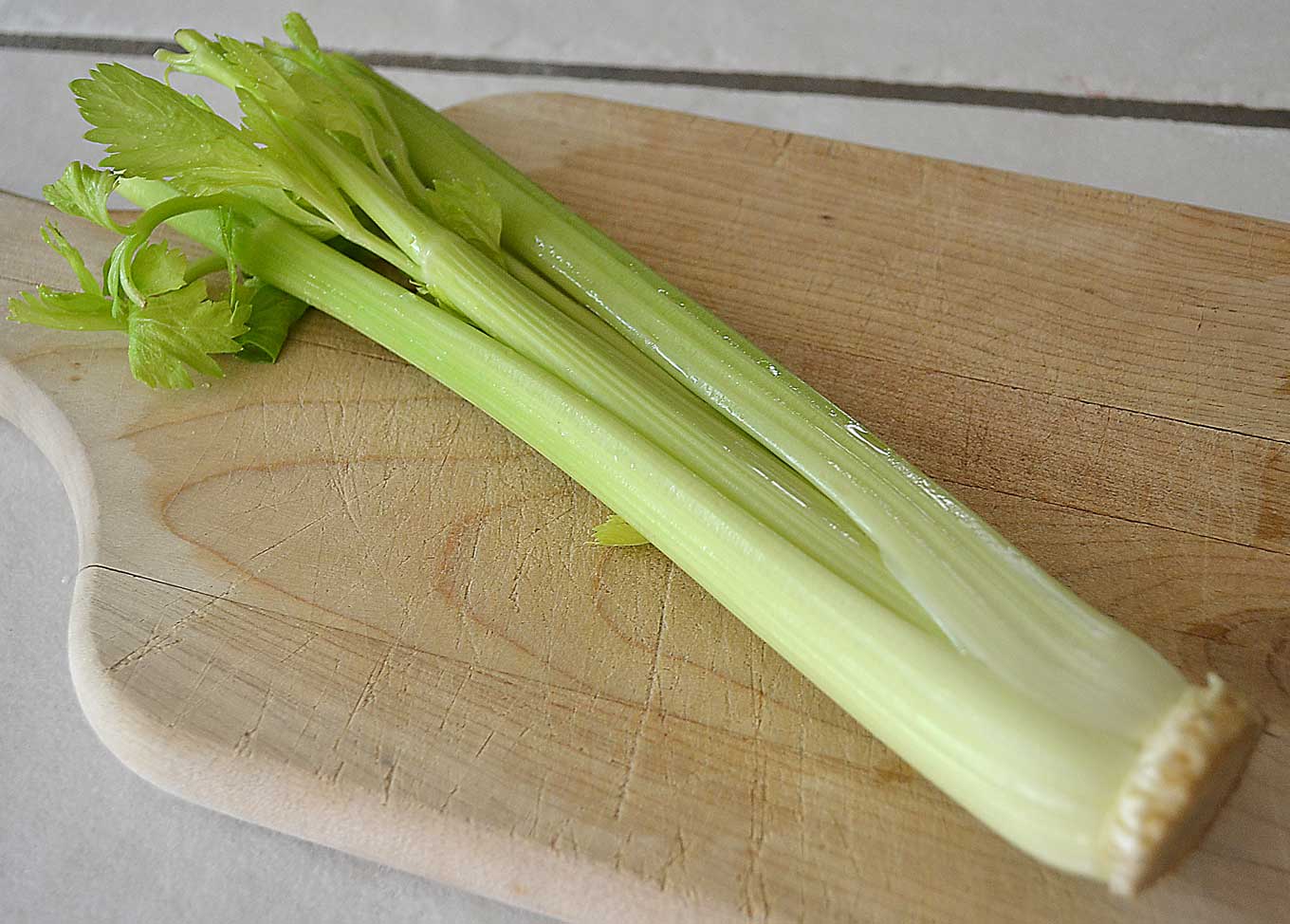
Be sure to include those cute innermost little pea green sprouts and leaves as well. They are packed with flavor!
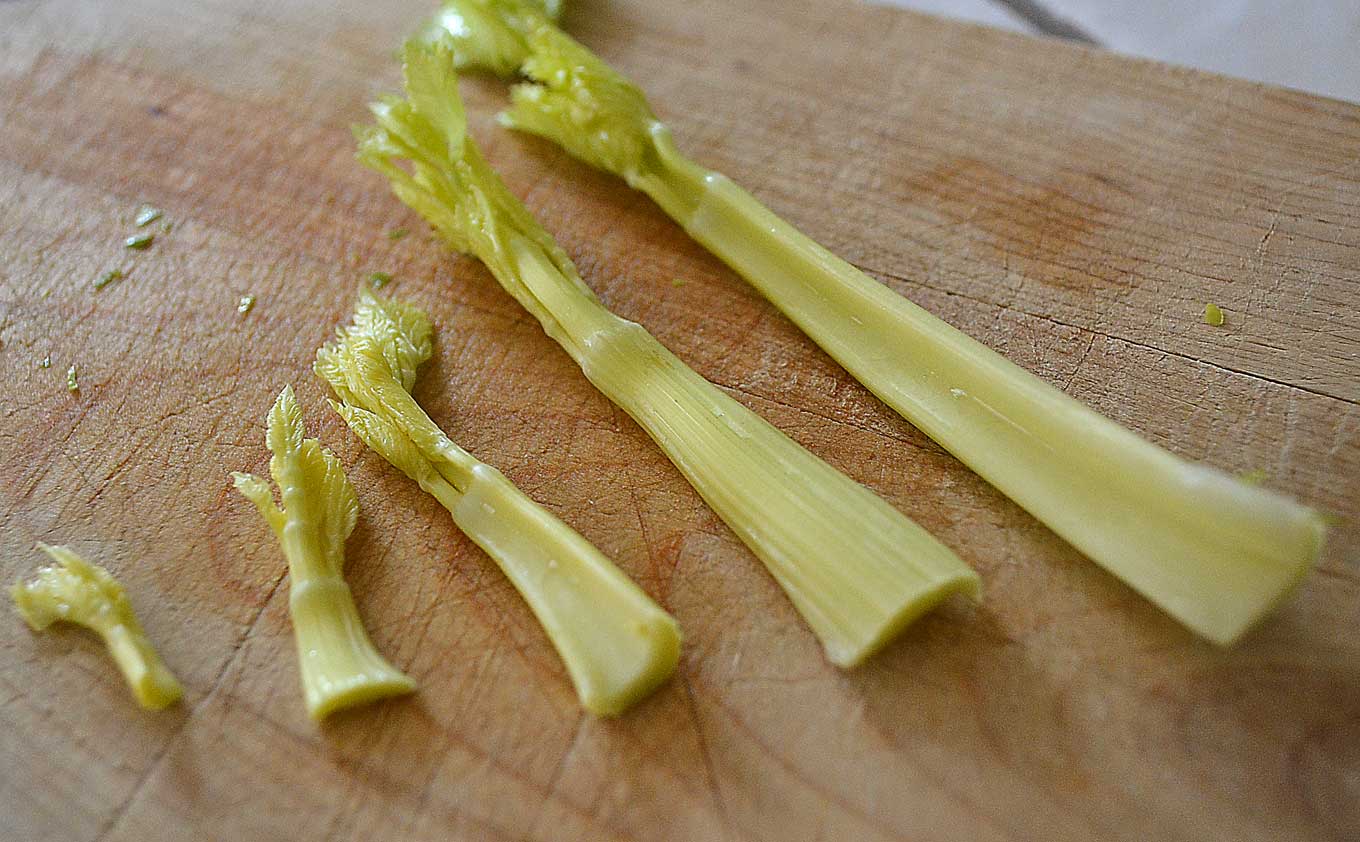
Cook for a minute or so on medium-high.
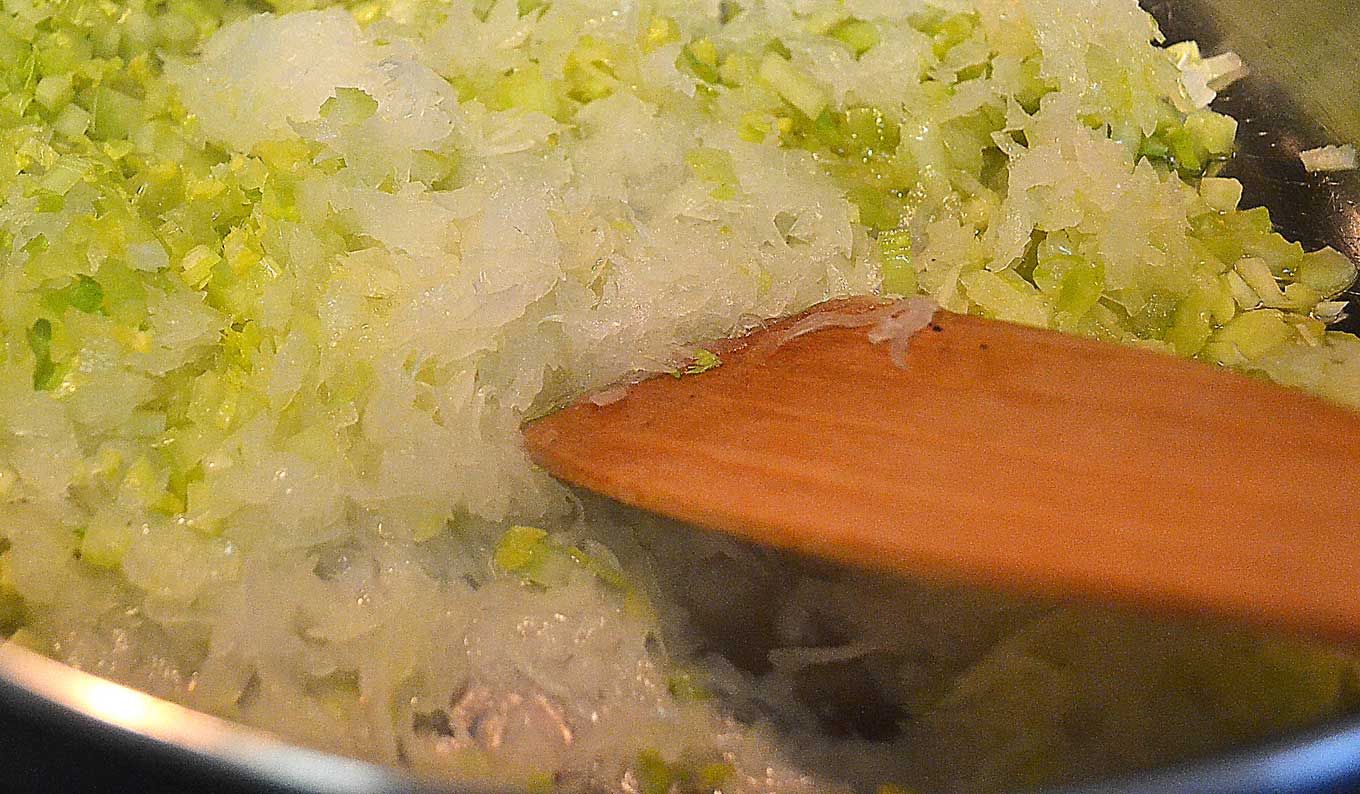
Add a little salt and mix well. Then lower the temperature to medium-low and cook, covered, for 15 minutes. While it may seem like an exceedingly long time, cooking a mirepoix like this is what brings out its natural sweetness and savory flavor. It will then look like this:
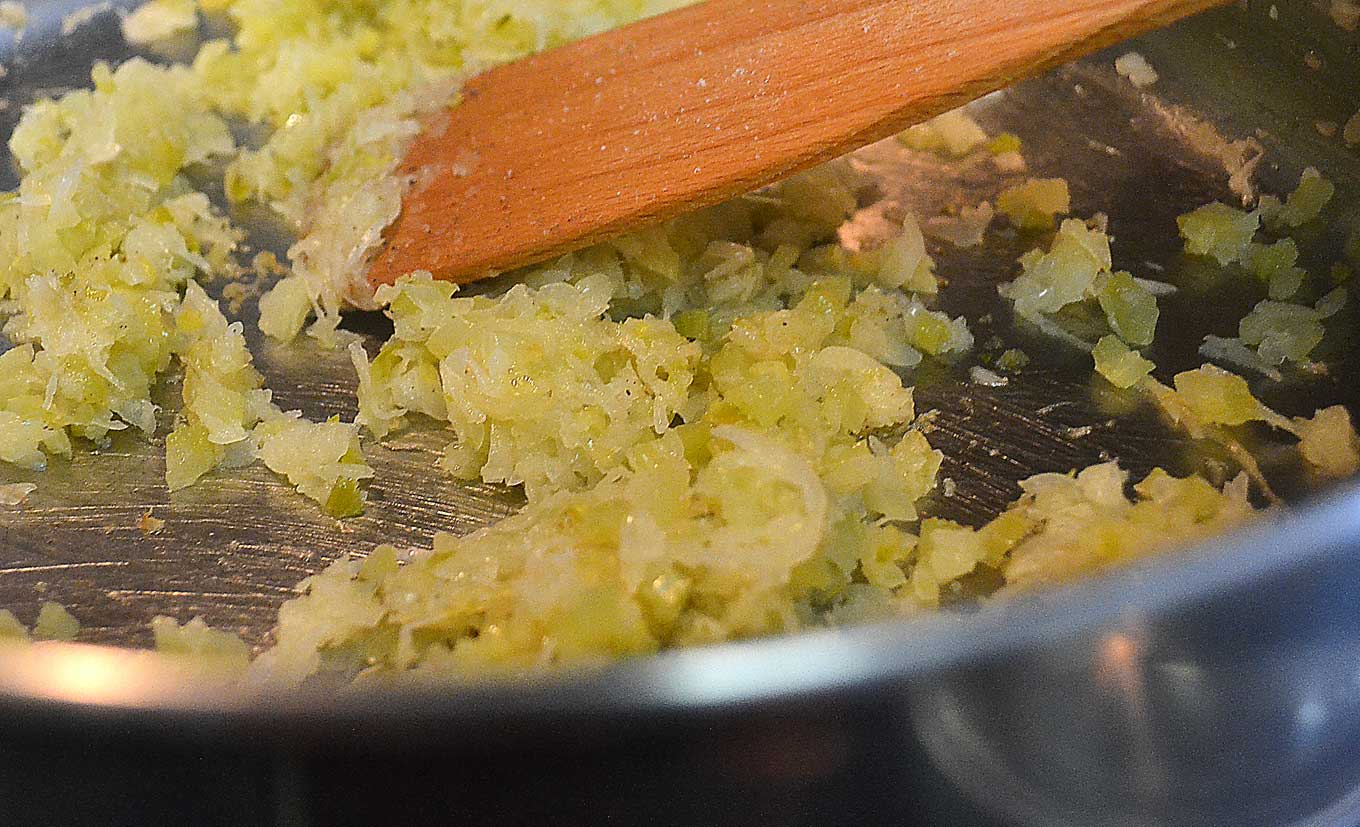
Many recipes I’ve seen call for adding carrot to the mix, but I think it makes the resulting sauce taste too sweet. It detracts from the taste of the lamb, is what I think. So I don’t use it.
Add the lamb pieces and their juices back in and mix well.
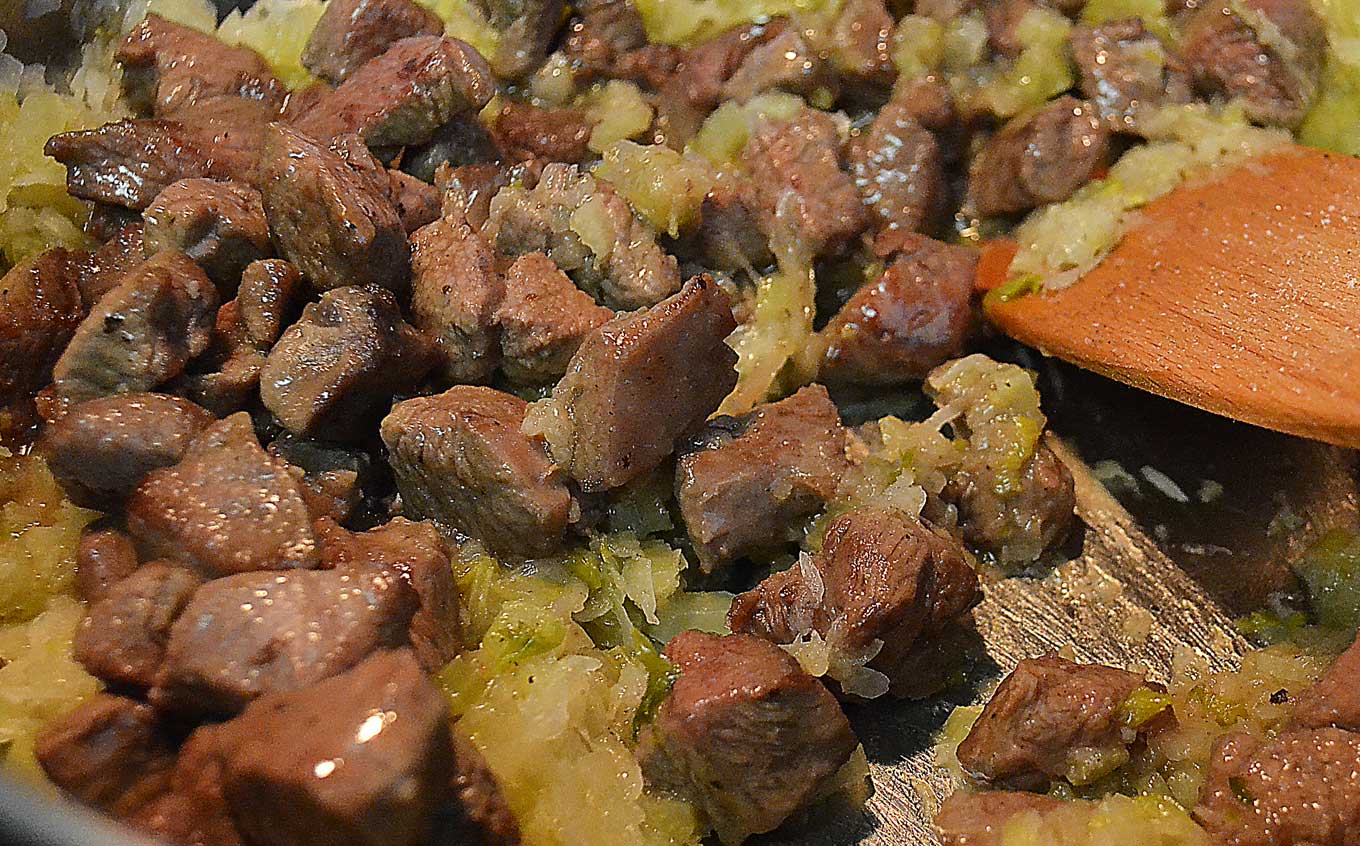
Cook for a few minutes on medium-high heat. Maybe 5 or so. You will soon start to see ‘fond’ on the bottom of your pan. Fond are those crispy bits that stick that are chock-full of complex flavor. We love fond. Fond is good.
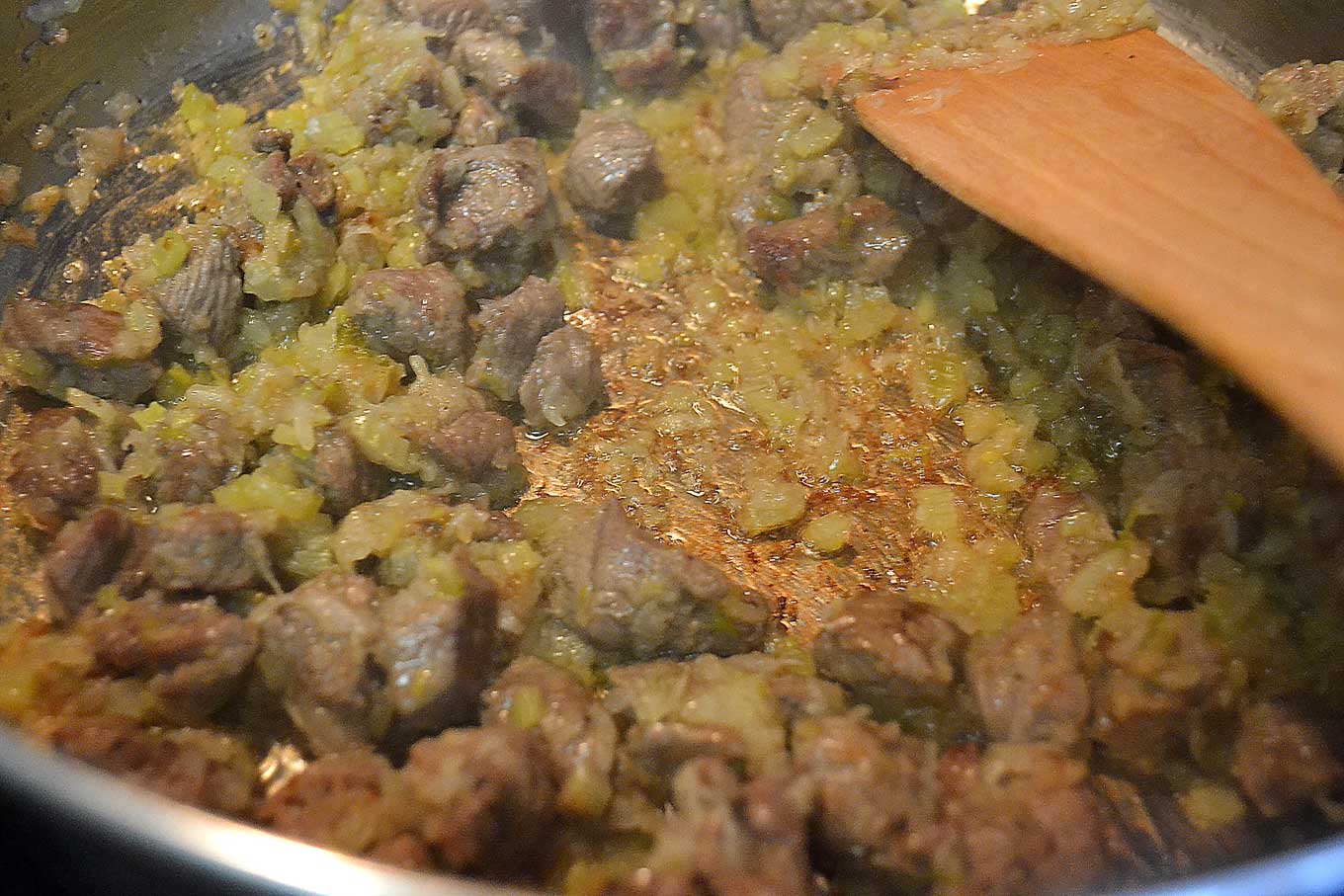
Add 3 tablespoons of tomato paste.
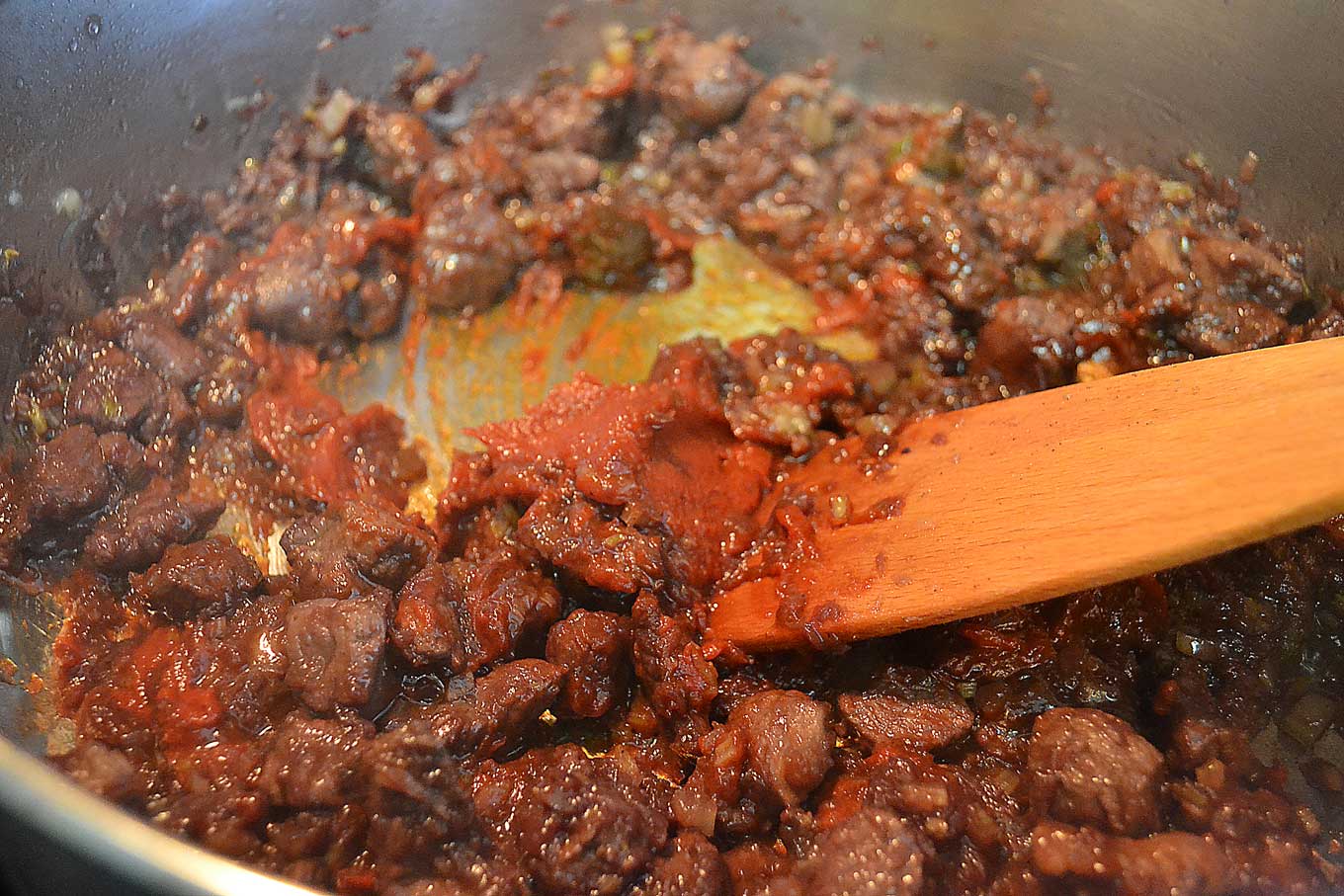
Add the cooked wine.
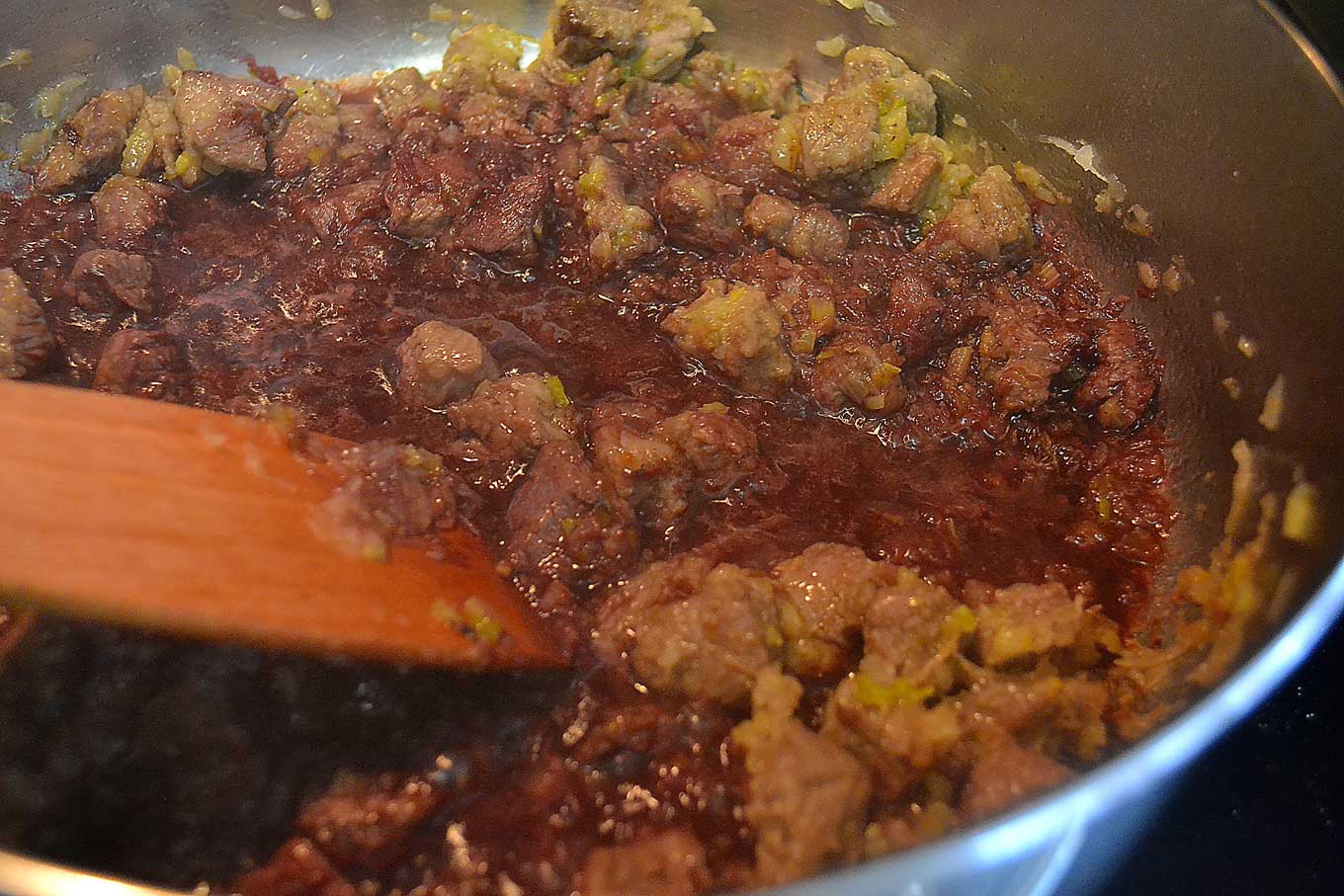
It doesn’t look ravenously appetizing at this point, does it? Let’s persevere.
Add 1 cup of chicken or beef stock and a few sprigs of rosemary.
About stock…I don’t generally have any laying around, say, in my freezer. So whenever I need a cup of beef broth here or a half of chicken broth there, I use my trusty Better Than Bouillon friends. They come in chicken, beef, fish, ham and a bunch of other flavors that I now can’t remember.
I unfortunately do not benefit one iota from saying this at all, but I do find them to be excellent in taste. They are a little salty, so adjust your salt accordingly when using this product in a dish you’re making.
After adding the liquids, be sure to scrape up any last, lingering brown crispy bit stuck to the bottom of the pan using a wooden spoon. Bring to a boil and then lower the heat to medium-low and cook for 30 minutes. Taste for salt.
Meanwhile, bring a large pot of salted water to a boil over high heat. Add 3/4 of a pound of the pasta of your choice and cook until tender but still firm to the bite. Glance at the cooking time approximations on the pasta packaging, but always rely on the ultimate way to properly cook pasta…by tasting it. Drain the pasta very well.
Divvy up the cooked pasta among four bowls and ladle a generous amount of sauce on each one. Add chopped parsley leaves for a splash of vibrant color and sprinkle as much Parmigiano-Reggiano as pleases you. Makes 4 servings.



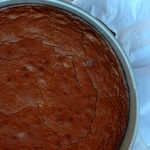

Leave a Reply